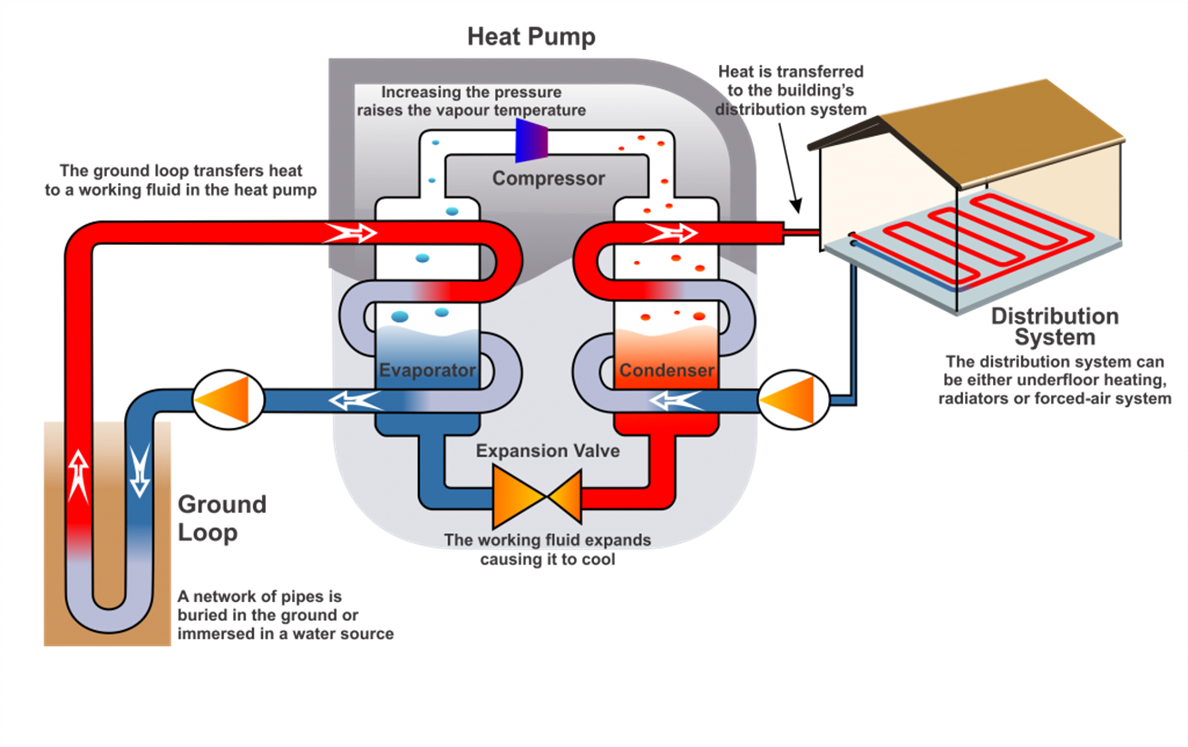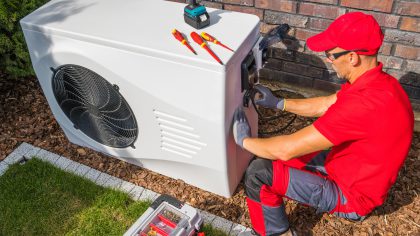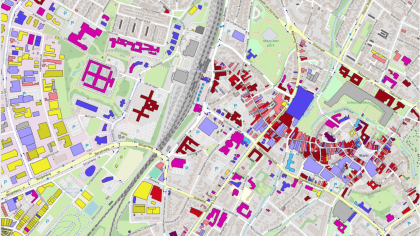Vertical pipe heat exchangers are more common in the Netherlands (CE, 2018). It is a closed system in which an antifreeze solution (‘brine’), a mixture of water and antifreeze, is pumped through pipes in the subsoil. The heat pump has an evaporator (heat exchanger) where a refrigerant flows through that absorbs thermal energy from the antifreeze solution in the closed loop. An electric driven compressor increases the temperature, then the refrigerant condenses back to a liquid (in the condenser) and releases heat to a heat exchanger, an expander makes it ready for heat absorption (closing the cycle). Heat generated in the condensor is transferred to the central heating system. Water is used as medium for heat transport inside the dwelling, hence the name ‘soil-water’ heat pump. A ground source heat pump can also provide domestic hot water (sometimes with help of an electric heating element). The presen ce of a storage tank/buffer for hot water improves the performance of the heat pump over the year, because the number of times the heat pump is switched on and off will be reduced (CE, 2018). Furthermore a ground source heat pump can be used for space cooling in summer (Milieucentraal, 2018).
The efficiency of a heat pump is expressed as the coefficient of performance (COP), the ratio between heat output and electricity input, and is mainly determined by the difference between delivery temperature and source temperature. The higher the source temperature and the lower the delivery temperature the higher the COP. A ground source heat pump uses the soil as a heat source which has a more or less constant temperature of 10-14ᵒC over the year which means it has little or no influence on the COP of the heat pump. As a consequence a ground source heat pump has a higher seasonal COP compared to a heat pump that extracts heat from the outside air (Greenhome, 2018; ETRI, 2014).
A heat pump usually heats the water to 35 to 55ᵒC. At least once a week, the temperature of the hot tap water is increased with an electric heating element (such as an electric boiler) to 60ᵒC (and briefly to 70ᵒC) to prevent the risk of legionella contamination (Milieucentraal, 2018).
For performance reasons a ground source heat pump should be used in combination with a low temperature heating system, which requires that the dwelling is sufficiently insulated. The minimum insulation level required corresponds to a dwelling with energy label C (CE, 2018). Usually the insulation level needed is label A or better. A low temperature heating system consists of under floor heating and/or low temperature radiators/wall heating. According to the Dutch Heat Pump Association ground source heat pumps are mostly installed in new buildings (DHPA, 2013). The amount of space required for the soil heat exchangers can be an issue for existing dwellings (Ecofys, 2015).
All information in the datasheets is also available in ESDL (Energy System Description Language). You can find them in the Energy Data Repository (EDR).



